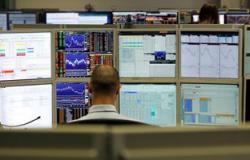On one thing the opinion is almost unanimous: nothing will ever be the same as before. Artificial intelligence is destined to change the physiognomy of the ways of producing, creating and selling in a matter of years. The governor of the Bank of Italy, Fabio Panetta, in his annual report spoke of “potentially disruptive changes in the world economy”. A “creative destruction”, to use the oxymoron coined by the economist Joseph Schumpeter, of a force never experienced before. At risk is not the life of individual companies, but of the economic models of entire countries. The question, therefore, must be asked: will Italy be among the winners or losers of this new technological revolution?
«If we don’t move immediately», says Giuliano Noci, vice-rector of the Polytechnic University of Milan, «made in Italy risks disappearing within a few years». It’s not just any opinion. Noci is part of the Coordination Committee for Artificial Intelligence called by the government to provide a contribution to the national strategy on the use of AI. The final document drawn up by the “wise men” has long been delivered to the government. Stopped in a drawer for now. Also because, it is said, there would be requests for investments amounting to many billions in order not to get off the artificial intelligence train. «The point», explains Noci, «is that Italian companies do not have the culture of data and therefore, many do not have a codified database». The economic structure of the country is made up of small and medium-sized businesses that often have not digitized their “knowledge”. Furnishing excellences that have models drawn on paper. Or fashion, textile and ceramic companies. “The risk,” says Noci, “is that artificial intelligence models are trained on American or French data.”
Brain drain, that great exodus of young graduates and the mortgage on the future
THESIS
A knowledge, a style, a taste built over centuries of history risks being swept away. A thesis on which Fabrizio Milano D’Aragona, CEO & Co-Founder of Datrix, called to coordinate the working table on Artificial Intelligence of Assintel, the association of ICT companies, also agrees. «Large companies», he says, «are all moving and are prepared for the advent of AI, small and medium-sized companies are objectively late, they don’t have a specific focus on this topic». We need to hurry, to run. To create the necessary artificial intelligence infrastructure. In his report, Panetta called for “the entry of European companies into the development of this technology”.
THE CHASE
Joint initiatives would, he said, make it easier to find the enormous financial resources necessary to compete with foreign producers. «Microsoft. Meta, Google, Amazon invest colossal sums in the platforms”, explains Christian Lechner, head of academic research at the Luiss Business School. Competing with the giants is difficult, especially for a country like Italy where venture capital is struggling to take off. «In the United States», Panetta always recalled, «the top six companies by stock market capitalization, each with a value exceeding 1,000 billion dollars, were initially financed by these investors and today are global protagonists of the digital revolution». Europe, on the other hand, is unable to keep up.
Italy even less. «The French and the Germans», explains Lechner, «invest five or six times more than us, even Spain spends twice as much». In the three-year period from 2021 to 2023, we read in the Bank of Italy’s report, the annual investment flow fluctuated between 500 million and one and a half billion. Above all, private capital is missing. «The Germans add one public euro for every euro contributed by the private sector, the Israelis add even six», says Lechner.
In Italy, however, CDP, which through CDP Venture has launched a one billion fund to support AI, must almost play a substitute role for the private sector. Panetta called for greater involvement of institutional investors. “If insurance companies and pension funds invested a share of assets equal to that of France in national funds, collections would double.” We would therefore need money, and lots of it.
But despite all the difficulties, something is moving in Italy too. There is a point to start from. It is Leonardo’s pre-exascale super computer. In terms of computing power it is among the top six in the world, third in terms of artificial intelligence training capacity. It can process 250 million billion operations per second. When it was born, at the end of 2022, it was among the top four computers for computing power. Here too, innovation runs fast and money is needed to keep up and not be overtaken. The super-computer is managed by Cineca, a non-profit inter-university consortium made up of 118 public bodies, including 2 ministries and 70 Italian universities. The use of the super computer is free. Three asked to do so to build an Llm, an Italian large language model, an alternative to the machines trained by OpenAi and other American giants. These are the start-ups I-Genius and Istella, the latter by former Tiscali owner Renato Soru, and Almawave, the French-speaking software company that is developing Velvet, a multilingual model. Even the French Mistral, the most advanced European project in the field of generative artificial intelligence, has trained its model with Leonardo’s super-computer. But why train the AI in Italian when ChatGpt is capable of practically using any language.
THE PHILOSOPHY
«The philosopher Wittgenstein», Alessandra Poggiani, general director of Cineca, recently explained, «said that language determines the boundaries of our world. Especially in specific fields, such as medicine, having a virtual assistant trained on our cultural heritage determines the type of response he can give us.” It’s like saying, let’s go without saying, that artificial intelligence must learn to think like Italians. In the American models the “texts” loaded in Italian do not exceed 1%. In the European ones it does not go beyond 3%. Do you really think that a translator, even an excellent one, is enough to represent Italian culture within an artificial intelligence model? At conferences between technicians, a slide is often presented in which the Artificial Intelligence was asked what the difference was between Parmesan and Parmesan. The answer? None, they are the same thing. Except that in the first there is the centuries-old knowledge and agricultural culture of a part of the country, the second is a very common cheese with little flavor produced mainly abroad and baptized with a name that recalls one of the most famous Made in Italy brands. Artificial Intelligence is a learning technology. It will fix the error. But it is better for Italian companies to start equipping themselves to protect and exploit all their knowledge by investing in data and new technology. But to make everything work, an “ecosystem” must be built, in which everyone does their part: finance, businesses, politics and universities.
© ALL RIGHTS RESERVED
Read the full article at
The messenger






